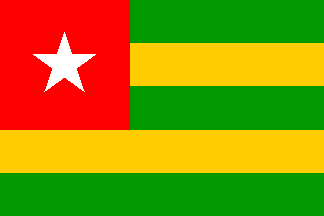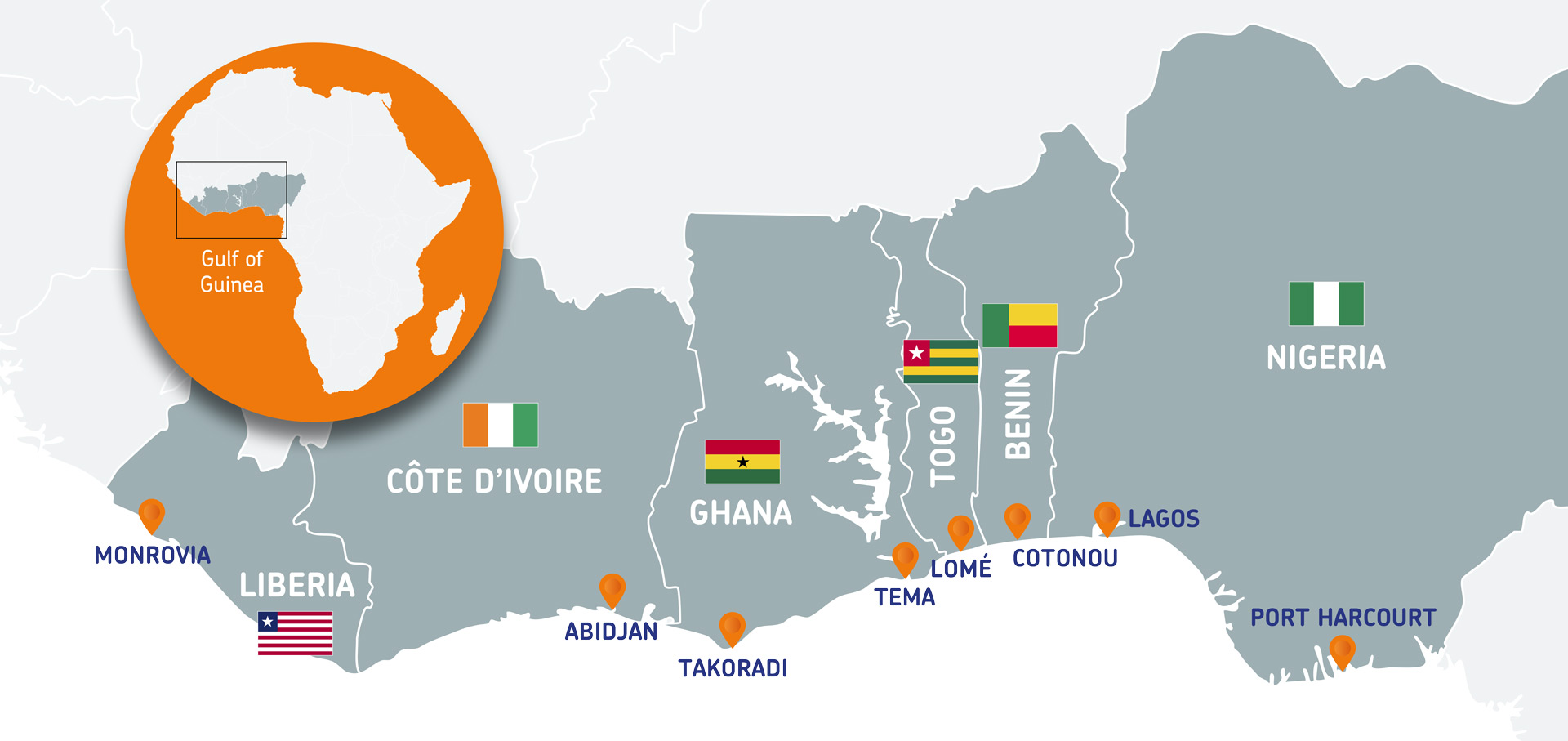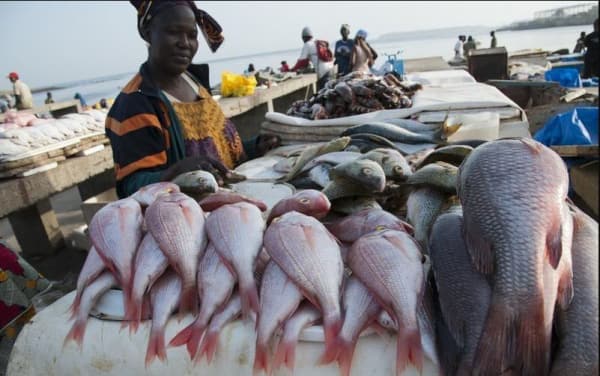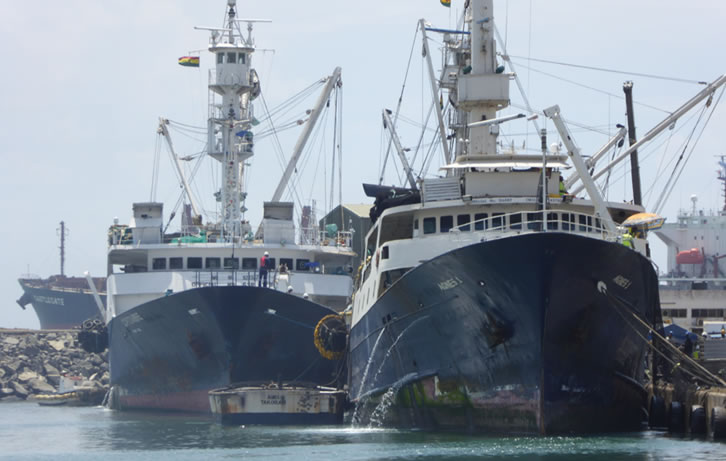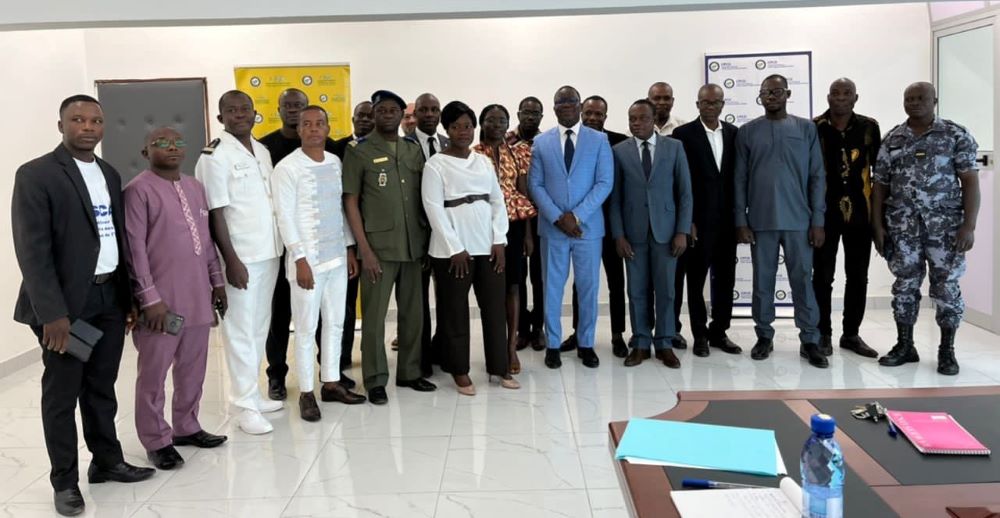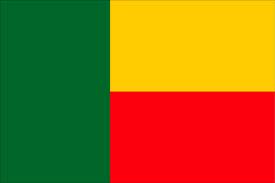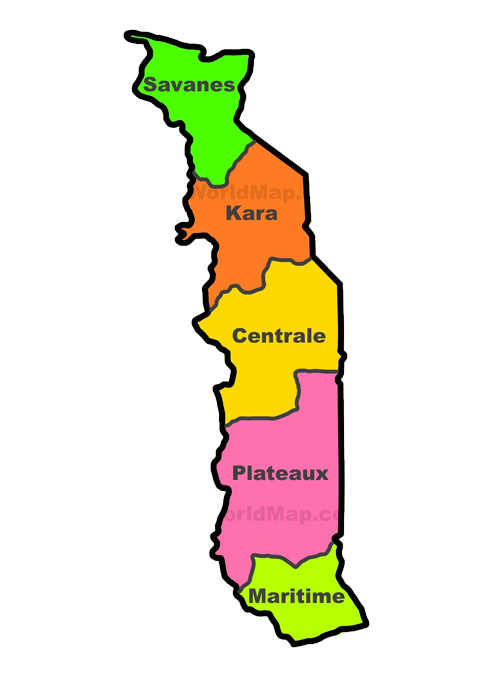
Map of Togo
Imports: Whole frozen fish from West Africa, Europe and China.
Exports: a significant portion of imports goes on to be exported to Nigeria and landlocked West African States.
PORT: Lomé acts as an important transit point for landlocked countries such as Mali, Niger and Burkina Faso.
| Website | https://maritime.gouv.tg/ |
| Ministry | Minister of Agriculture, Animal Husbandry and Fisheries |
| Minister | Edem Kokou Tengué |
| Director | Domtani Ali |
| Head of MCS | Kossi Ahoedo |
| Country Flag |
 |
| Length of coastline (km) | 56 |
| Area of EEZ (km2) | 15,375 |
| Contribution of fish to animal protein consumed | 40% |
| People employed | 31,393 |
| Contribution of fisheries to GDP | 5.3% |
| Bottom trawlers | 1 |
| Shrimp trawlers | - |
| Pole and line vessels | - |
| Tuna purse seiners | - |
| Sardine purse seiners | - |
| Longliners | - |
GENERAL INFORMATION ABOUT TOGO RELATED TO FISHERIES
Togo, officially the Republic of Togo, is a country in West Africa. It borders Ghana to the west, Burkina Faso to the north, Benin to the east, and the Gulf of Guinea to the south. It has a total land area of 56785 km2. The country has a coastline of nearly 48 km long and the area of the continental shelf is about 1 500 km2.
The marine, lagoon and inland fisheries only produce 40% of the national fish requirements; approximately 60% is imported. The role of the fishing industry is very important to the national economy, its value is of the order of 5 billion FCFA per year with an added value of 10 billion per year, or 4% of the GDP of the primary sector. The fishery employs 9 000 fishermen, 12 000 women fish traders and about 150 000 people depend on the sector directly.
STRUCTURE OF THE FISHERIES SECTOR
Artisanal fishery
Marine artisanal fisheries
The marine artisanal fishery is the most important activity at sea as regards both the number of fishermen and catches. This fishery represents actually 70 to 80 per cent of the total national fisheries production.
Artisanal lagoon fishery
The artisanal lagoon fishery in Togo is considered a form of inland fisheries. This fishery is not monitored due to lack of financial and manpower resources.
Artisanal inland fishery
The artisanal inland fishery produces a certain quantity of fish annually, although the order of magnitude is hardly known. The production has been estimated at 5 000 tonnes per year for a long time. There are no financial nor manpower means to estimate this quantity more precisely.
Industrial Fisheries
The industrial fishery is of less importance than the artisanal one, both in terms of fleet size and catches. The industrial fishery is carried out by trawlers that exploit demersal stocks, which are of low productivity. The potential yield of the trawl fleet is estimated between 600 and 800 tonnes per year.
Tuna fishery
There is no tuna fishery in Togo, although it may be possible that foreign fishing vessels catch tuna at open sea. In that case one deals with undeclared catches.
Main resources of the marine sub-sector
The available information indicates that the waters under Togolese jurisdiction are relatively poor in fisheries resources. The potential fish yield would be of the order of 600 tonnes per year.
Pelagic resources
The majority of the artisanal fishermen target small pelagic fish specie, i.e. sardinellas, barracudas, amberjacks, and “fritures” (Brachydeuterus auritus), etc. The pelagic resources that are also targeted are the marlins, sailfish and Spanish mackerels, etc.
Demersal Resources
The demersal resources consist of fish, crustaceans and cephalopods. The first group is the most important one; the representatives of the second group are also exploited and subsequently exported. The cephalopods are considered by-catch and are not really targeted.
Fish Resources
The exploited fish species are subdivided into two groups, those found on trawlable fishing grounds (Pseudotolithus spp, Galeoides, flatfish, etc) and those living on rocky bottoms (Lutjanus, Sparus, groupers, etc).
Crustacean Resources
Near the mouths of the rivers shrimp ca be found, which are exploited by mostly foreign fishing vessels.
Cephalopod Resources
Octopuses are rarely caught and other species are not targeted. In case cephalopods are landed then by-catch is dealt with.
Source – FAO: WWW.FAO.ORG

